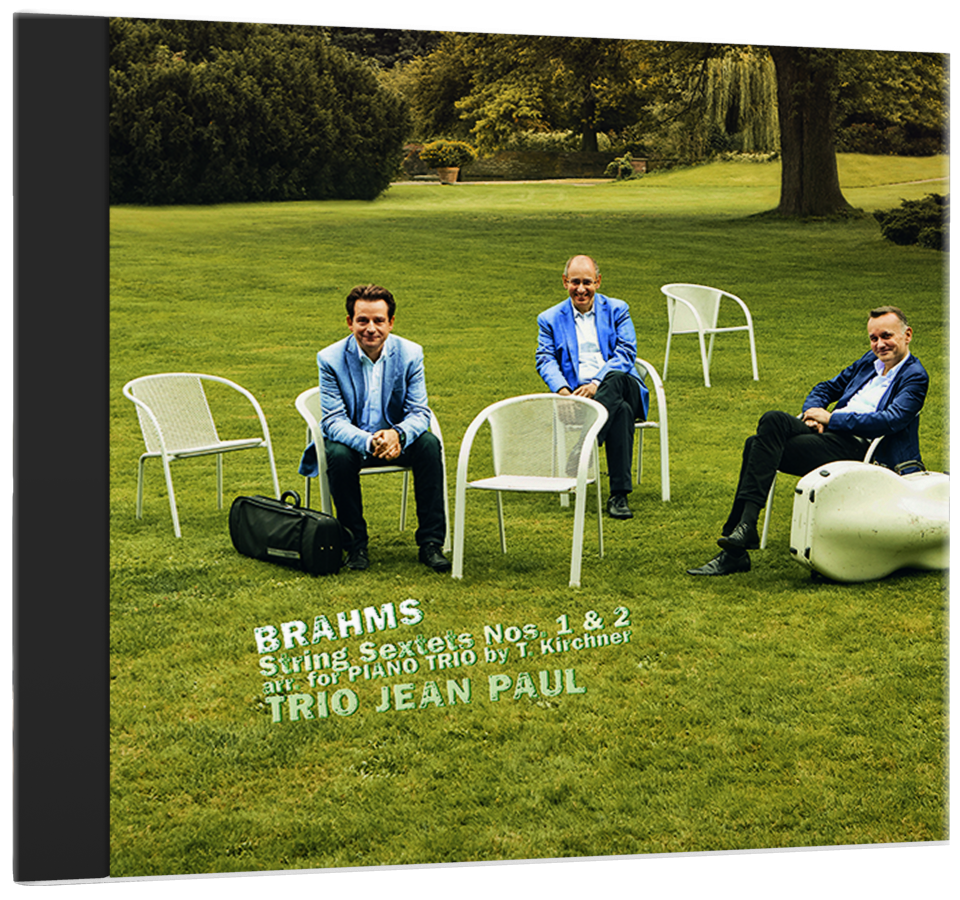New CD: Brahms String Sextets op. 18 & 36
“I was truly relieved to learn that you seem to be not entirely unsatisfied with my arrangement of your sextets. Indeed I put much work into them, but it is always a delicate matter when one senses the author’s fine nose lurking in the background. You went through the proofs meticulously, as it seems, and it will thus be hard for me to find further printing errors. There are quite a few in the score [of the sextets]! Ah, well, even fools should find some enjoyment when they deal with them one hundred years from now. In my opinion, trio players will regard these two works as a welcome gift.”
That last ‘prophetic’ sentence by Theodor Kirchner – in an 1883 letter thanking Brahms for having praised his arrangements of his sextets – was unfortunately not fulfilled: these trio arrangements are now only featured in concert programmes on rare occasions. A partial explanation can be found in the general contempt suffered by arrangements of all kinds: according to general opinion, they are at odds with the current demand for ‘historical authenticity’. Anyone who sets out to arrange a musical master-piece is undoubtedly assuming an immense artistic responsibility. In the best of cases, an arrangement should not only permit other instruments to perform the original in a new setting, but it should illuminate certain aspects in a way the original could not. A truly well-achieved arrangement is thus also an act of interpretation that transforms its model to a certain extent.
We, the two string players in the Trio Jean Paul, obviously knew and loved Brahms’s two string sextets from practical experience, having performed them frequently in their original scoring – how much greater was our surprise and fascination when all three of us discovered Theodor Kirchner’s arrangements for piano trio! Not mere adaptations for a Hausmusik setting, they represent so much more: in our opinion, these are thoroughly ingenious elucidations of Brahms’s string sextets.
As a cellist I admittedly did not see the utility of assigning the cello’s entire introduction in the first movement of the B Flat Major Sextet exclusively to the piano. Only when we attempted to consider alternatives did we begin to realize that Kirchner had carried out a series of lucid, extraordinarily well thought-out choices throughout his entire arrangement. For instance, Brahms only added the B Flat Major Sextet’s ten introductory bars ‘after the fact’, following a suggestion by Joseph Joachim. Kirchner, in turn, either knew this or sensed it intuitively. In his instrumentation they are re-elevated to the exceptional rank they deserve (somewhat concealed by Brahms in spite of having chosen an exceptionally low range for all the strings in the first bars of the original setting).
In terms of analytical grasp and artistic creativity, Kirchner’s achievement in both works is astounding. We hear a genuine piano trio texture at all times, only occasionally revealing the arrangement substratum lying at its core. As we further delved into these pieces and discovered new aspects, we were constantly led to admire and approve of Kirchner’s artistic choices, always based on a profound understanding of Brahms’s musical language. In our view, Kirchner’s arrangements are a fully valid interpretation, a ‘re-appropriation’ of these two unique works.
© 2015 Martin Löhr (Trio Jean Paul)


